Odds & Ends: Throne of Eldraine
As is tradition for each set, I do a mailbag column or two where I answer all of your questions about the new set. Today, I'll be talking about Throne of Eldraine.
Here's the tweet I posted:
It's time for me to write a mailbag column or two about #mtgeld. Please keep your questions about Throne of Eldraine to a single tweet, one question per tweet. Thanks. #WotCStaff
— Mark Rosewater (@maro254) September 13, 2019
As always, I'll try to answer as many questions as I can, but here's why I might not answer your question:
- I have an allotted word count, which means that there are only so many questions I can get to.
- Someone else might have asked the same question. I will usually answer the first person who asks.
- Some questions I either don't know the answer to or don't feel qualified enough in the area to properly answer.
- Some topics I'm not allowed to answer for all sorts of reasons, including previews for future sets.
As has become tradition, I'm going to start with the most asked question:
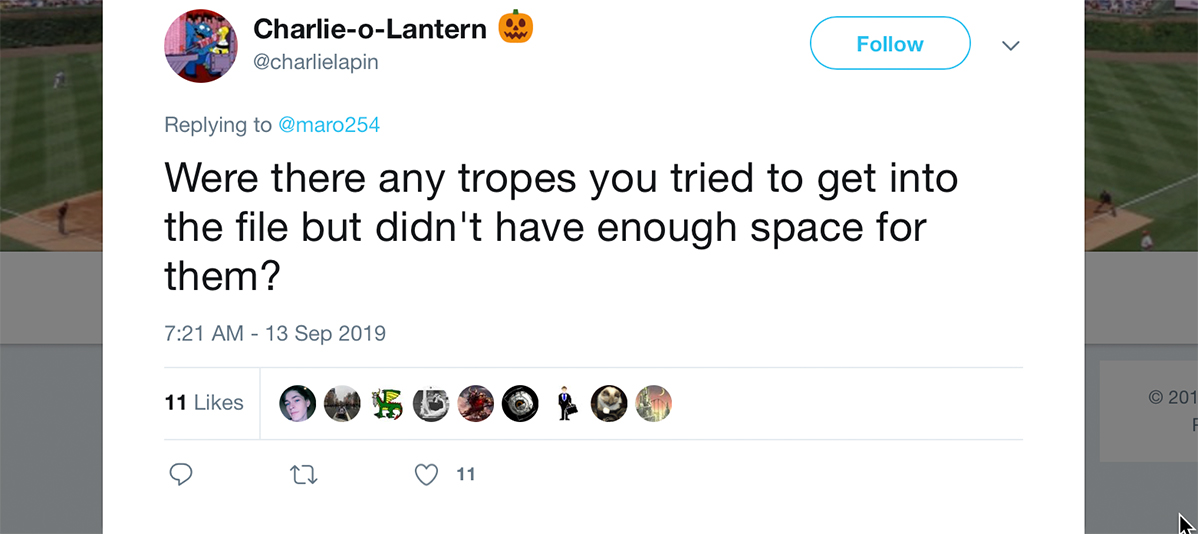
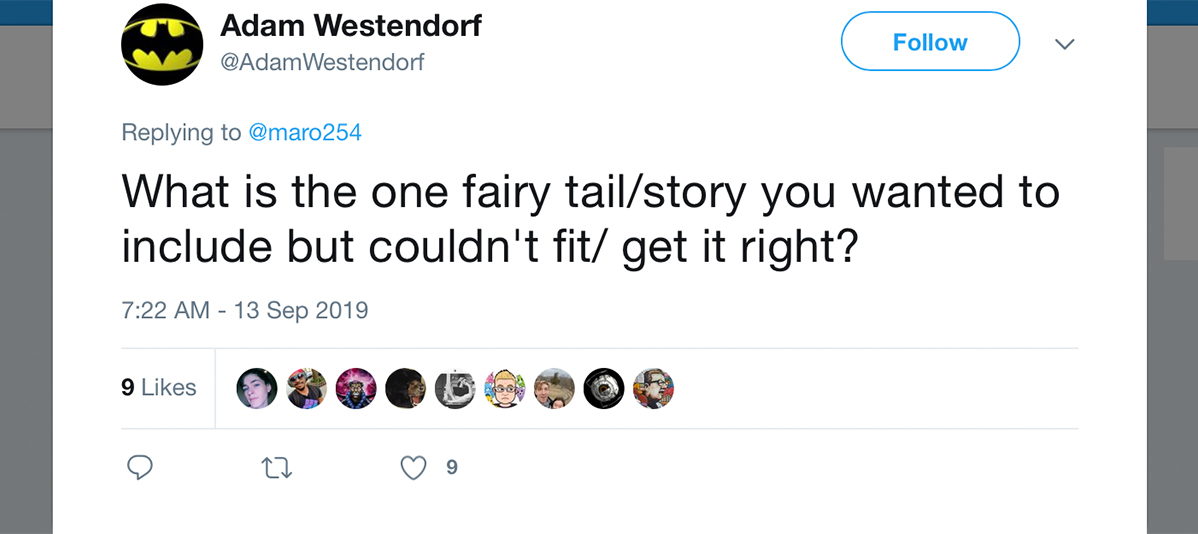
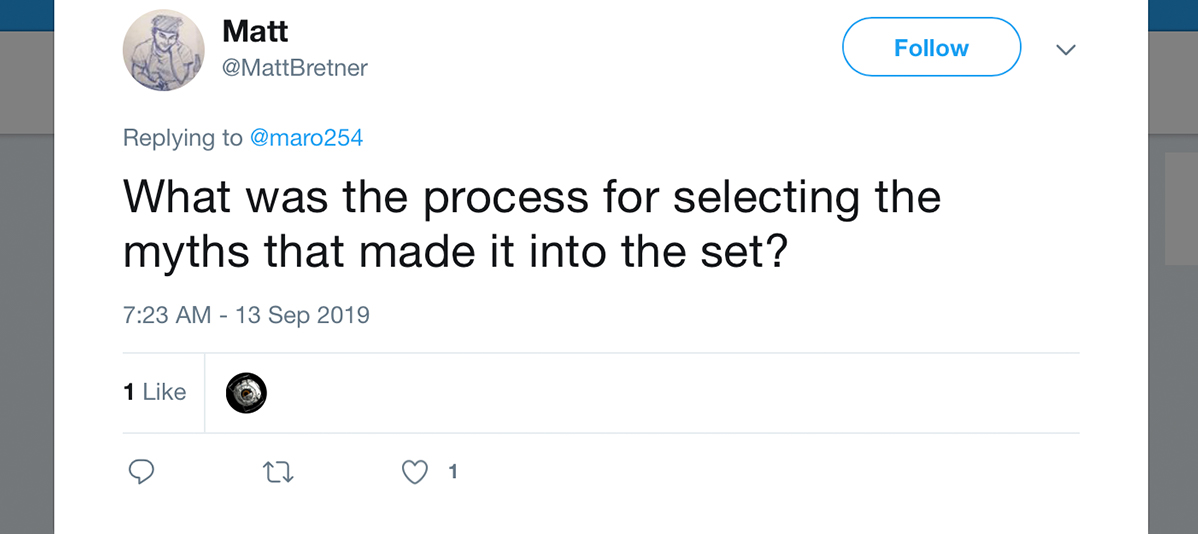
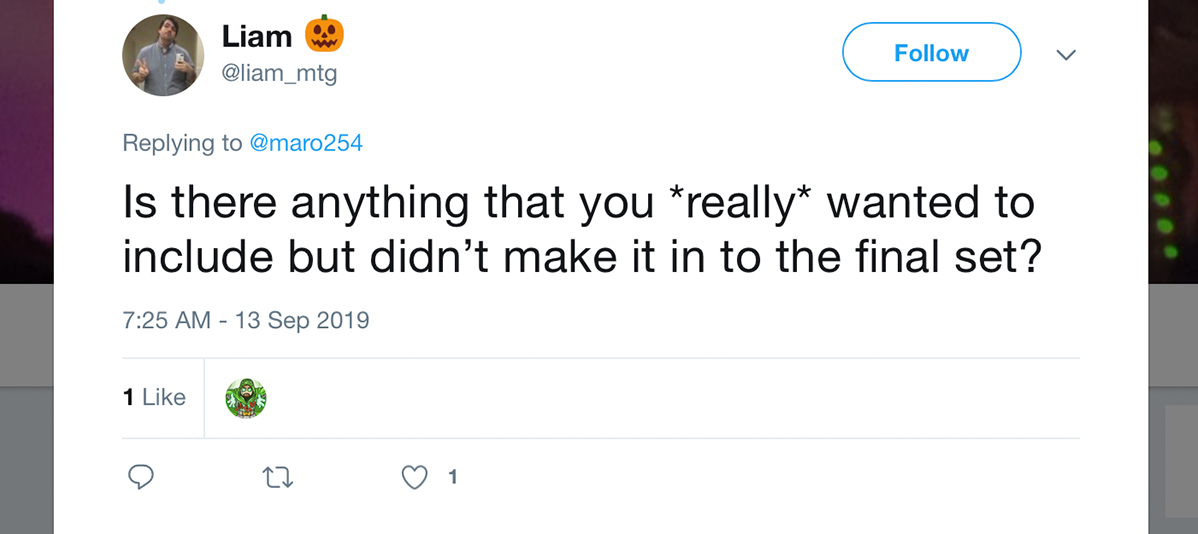
A lot of people seemed very interested in how we chose which fairy-tale/Arthurian tropes we wanted to make cards out of and whether there were ones left on the cutting-room floor. Here's how we did it. We made a document of every fairy-tale/Arthurian component we thought could make it as a card. Numerous team members went through each individual story and wrote down everything we might be able to use. And there was a lot.
For example, let's just take one story—Jack and the Beanstalk. Here's a list of potential cards:
- Adventuresome Youth
- Widowed Mother
- Traded Cow
- Magic Beans
- Tricky Trader
- Questionable Trade
- Angry at Stupidity
- Thrown Beans (Out the Window)
- Morning Surprise
- Beanstalk
- Climbing the Beanstalk
- Castle in the Sky
- "Fee Fi Fo Fum!"
- Beanstalk Giant
- Giant's Wife
- Fallen Asleep
- Stolen Gold
- Escape Down the Beanstalk
- Return to the Castle
- Golden Goose
- Golden Egg
- Magic Harp
- Chased Down the Beanstalk
- Fetch the Axe
- Chopping Down the Beanstalk
- Giant Killer (Killing)
Of course, we wouldn't do all the cards, but the fact that the story was so well known and had so many components allowed us a lot of different options. So, we took every idea from every fairy tale and Arthurian tale we could find and ended up with a list of hundreds and hundreds of card possibilities.
We then started making as many top-down designs as we could. When working on bottom-up sets in vision design, we usually focus more on structure early on, but with top-down sets we make a lot of individual card designs to see where they tend to push us mechanically. We had such an embarrassment of riches (as I've explained before, we spent weeks working on top-down Egyptian tropes for Amonkhet and got only a few dozen, many which couldn't work with the world) that we were able to focus on the more resonant ones. While Arthurian lore is deep, we did find that the recognizable tropes dropped off pretty quickly. The resonant, recognizable fairy-tale tropes, in contrast, went on for days.
I'll take the above list as an example. Jack, the cow, the giant, the trader, the magic beans, the golden egg, and the golden goose all made it into the set, but we designed the widowed mother, the magic beans (as an artifact), the questionable trade, "Fee Fi Fo Fum!," the magic harp, and chopping down the beanstalk (and possibly a few more I'm forgetting). We designed a lot of cards knowing that the best would make it through the system. So, were there fairy-tale cards that we made that didn't make it through? Yes, lots of them. In fact, we designed cards for a large chunk of our list, so if you can think up a fairy-tale/Arthurian trope, odds are we made one or more cards for it.
The thing that helped me was this: I knew we had way too many things to all fit into the set. There was a lot of world structure that was going to take up room. Using my cake metaphor from my preview article, the fairy-tale trope cards were the icing—which meant there was only so much that was going to fit into the set. The cake could only support so much icing. But I had great faith in Eldraine. I believed you all would love it enough that we'd be back, and that meant all those various cards that fell through the cracks would get future chances to see the light of day.
But really, if you have an obvious card we didn't print, odds are we designed it at one point. I was bummed that Magic Beans didn't make it. (It had a tiny tap effect and you could sacrifice it for a bunch of mana to make a green 0/6 Beanstalk creature token with defender.)
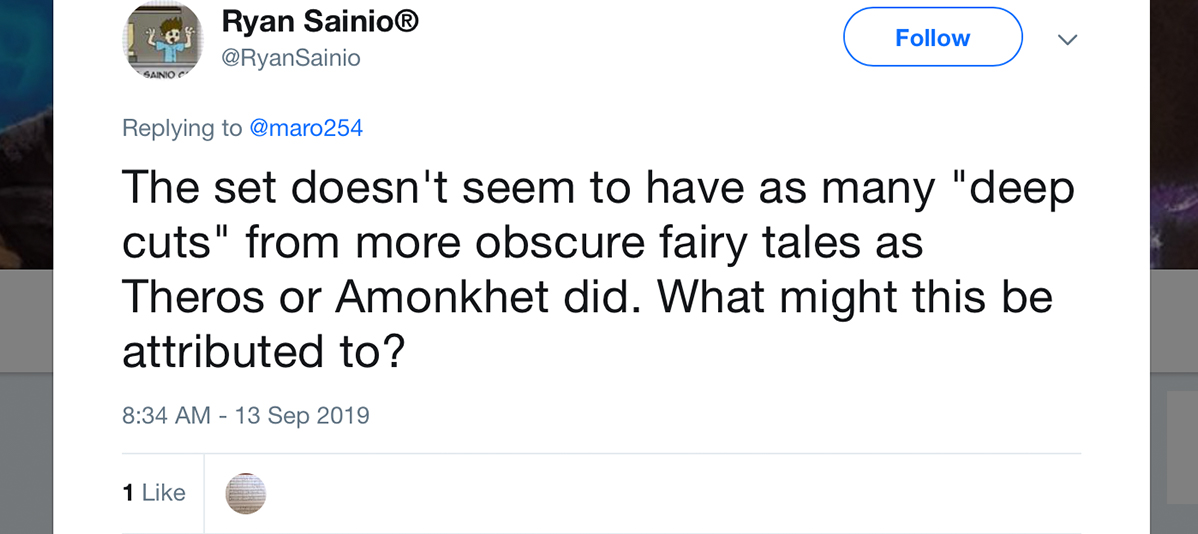
Two things:
One, it does have some deep cuts. For example, most people might think that Baked into a Pie is a reference to the nursery rhyme, but it isn't—we didn't do nursery rhyme references. It's referencing a story where an evil stepmother kills her stepson and cooks him into a meal. Also, for many players, much of the Arthurian references are deep cuts.
Two, as I explained above, we had so many well-known, resonant story elements to work with, there wasn't as much need to dig down to the lesser-known material.
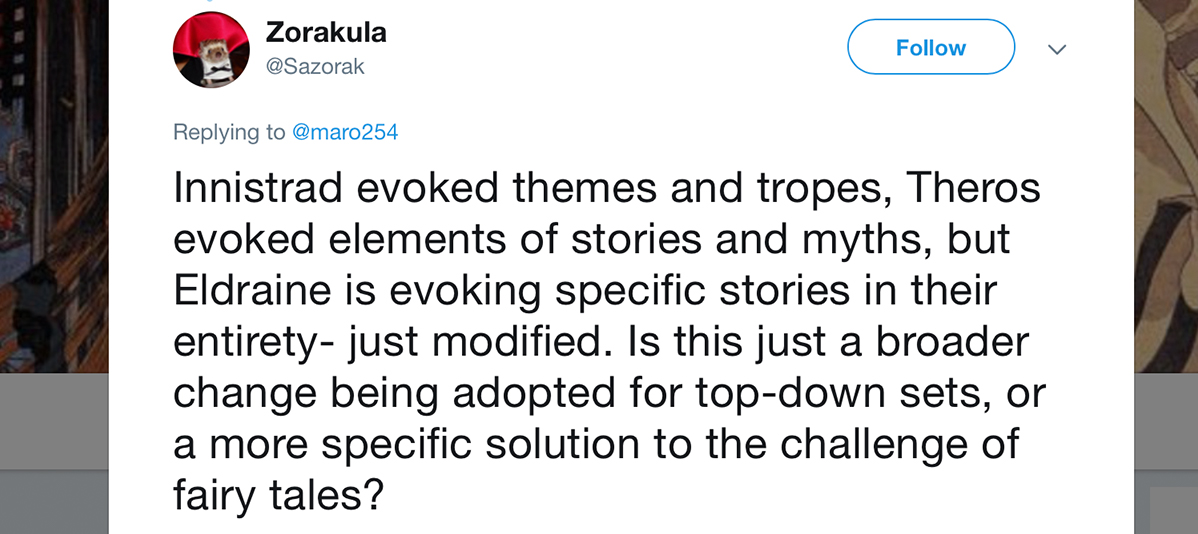
Much of the world's larger mechanical structural was built into the Arthurian side of the set. The courts allowed us to play up a monocolor theme, create Knight and non-Human tribal components, and care about artifacts and enchantments. What we found when we played with the fairy-tale side was that it had a very modular aspect to it. Fairy tales frequently make use of the same elements (a spinning wheel, a big bad wolf, a handsome prince, etc.) such that we could design components which the players could then mix and match, either by recreating the stories they knew (my True Love's Kiss wakes my Beloved Princess from her Charmed Sleep) or by creating humorous new combinations (my Gingerbrute and my Flaxen Intruder crew my Enchanted Carriage).
This ability for the player to use familiar components to create their own stories ended up being the mechanical heart of how we constructed the fairy-tale portion of the set. We purposefully made the components more open-ended so that they would combine well with each other. So, that's not a change in how we do top-down design, it's just what made this particular top-down design sing.
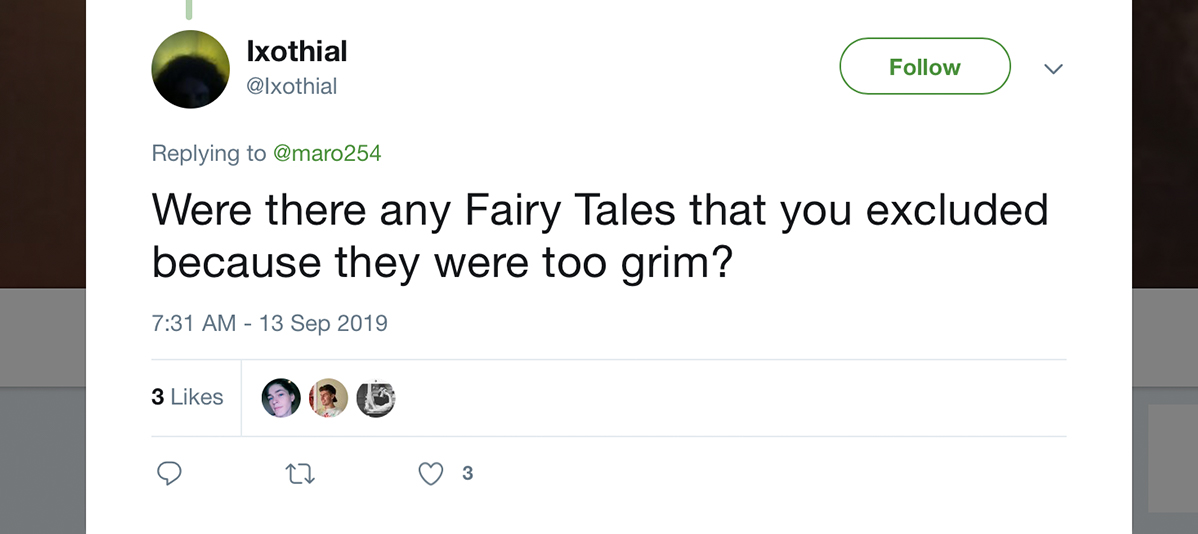
The very grim ones (and, also, Grimm ones) were much lesser known. The more famous fairy tales have been ones that have been able to be adapted for all ages over the years and thus gave us plenty of room to play with them tonally. Note that there's some dark stuff in Throne of Eldraine, but nothing that goes beyond Magic's normal tone. I should also point out that fairy tales are so woven into Western storytelling that we had a wide range of ways to represent the different stories. The audience is used to seeing fairy tales presented through a spectrum of tones, so we had everything from very light to quite dark to work with.
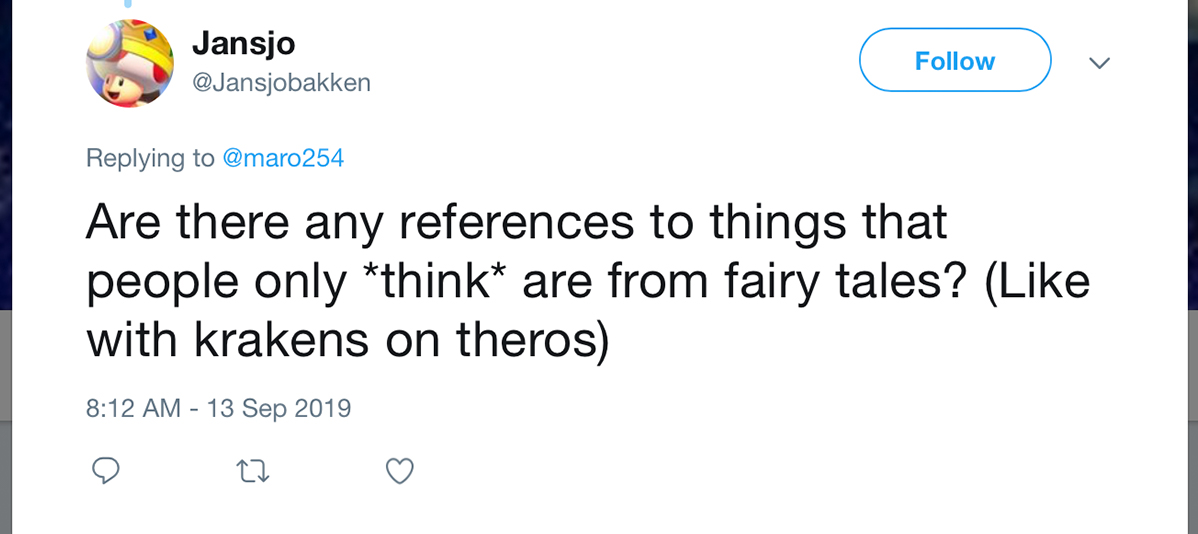
One of the truisms from doing top-down designs is that the audience is never quite as informed on the material as you think they'll be. In order to do top-down design, you do a lot of research, which means you dig far deeper into the source material than most of the audience ever has. As a result, you often make cards that you think are going to hit well but go over the heads of most of your players, either because the reference isn't obvious enough or it's pointing at something they just don't know.
Because this has happened numerous times, in design, we now tend to run things by people internally who have never seen the cards to monitor if they get the trope/reference we're going for. The Arthurian material followed the same pattern as normal where a lot got missed by the people we asked. The fairy tales, though, acted very differently. Most of the people we asked got most of it. Fairy tales are just something very engrained in pop culture of all ages and, thus, are just well known. Because of all of this, players tend to have a better grasp of what's actually from the fairy tales.
The one exception is that from time to time, people doing fairy tales in pop culture borrow from other lesser-known fairy tales while making the more popular ones. For example, the glass casket is from a Grimm story called "The Glass Casket," a fairy tale very few of you probably know (so, there's another deep cut for those in the know), but Walt Disney borrowed it for Snow White and the Seven Dwarves, so now more people associate it with Snow White than the original story.

Let me tell you the story of Puss in Boots. We were doing a high-fantasy/fairy-tale mashup, so a Cat swashbuckler felt like a perfect fit. We designed a card for him early in vision design. When the Creative team saw the card, they were a bit skeptical. Here's the dialogue we had (with my normal dramatic license):
Them: What exactly do you envision Puss in Boots looking like?
Me: It's a cat dressed up like a swashbuckler.
Them: So, it's dressed in clothes?
Me: Yes, it's Puss in Boots. He has to have boots at bare minimum.
Them: And it talks?
Me: Yes. He'll have awesome flavor text.
Them: And it fights with a sword?
Me: Yeah, he's really good with a sword.
Them, making a face: I don't know
All along the design process, we'd talk about where we wanted to draw the line separating the fairy tales that made sense in the world and those that didn't. Puss in Boots was the first time we made a card where the response from the Creative team was that they felt we'd crossed over the line. (The Gingerbrute had been "at the line"—they didn't know if he was over it or not.) They really didn't want talking animals. They felt like the animals could have agency in that humans could talk to them and they'd understand, but actually having them talk felt out of tone with the world they'd been building.
Okay, what if we had a cat, not one that talked, but he had boots on. He didn't have to be a swashbuckler, just a normal cat, but one that someone had put boots on, maybe cute little cat boots that someone had sewn for him. They didn't really like the animals being anthropomorphized, so wearing clothing was out.
Okay, what if we had a leonine swashbuckler? It wasn't an actual cat, but a cat humanoid. The Worldbuilding team had talked about animal humanoids, but felt that it was again a bit off the tone they were building for the world. They didn't mind a lot of mystical creatures, but let's steer clear of the animal humanoids and just let the animals be normal animals.
There are many important skills in doing vision design. One I don't talk about often is the importance of compromise. For instance, I was the one who had convinced Aaron to combine the top-down fairy-tale component with the Arthurian-inspired world. At the start of design, the Creative team was on board with the mashup, but was a bit worried about what the fairy-tale component might do to the Arthurian component, the part they had more confidence in. As such, I needed to work with them to make sure we were making something that all of us were happy with. There were so many other cool elements they were on board with, I knew I needed to give in on the anthropomorphized animal issue. A lot of worldbuilding is about capturing the right tone, and I trusted their expertise in understanding what components would mesh and which wouldn't. I couldn't have Puss in Boots, but maybe if I played my cards right, I could still get the Gingerbread Man.
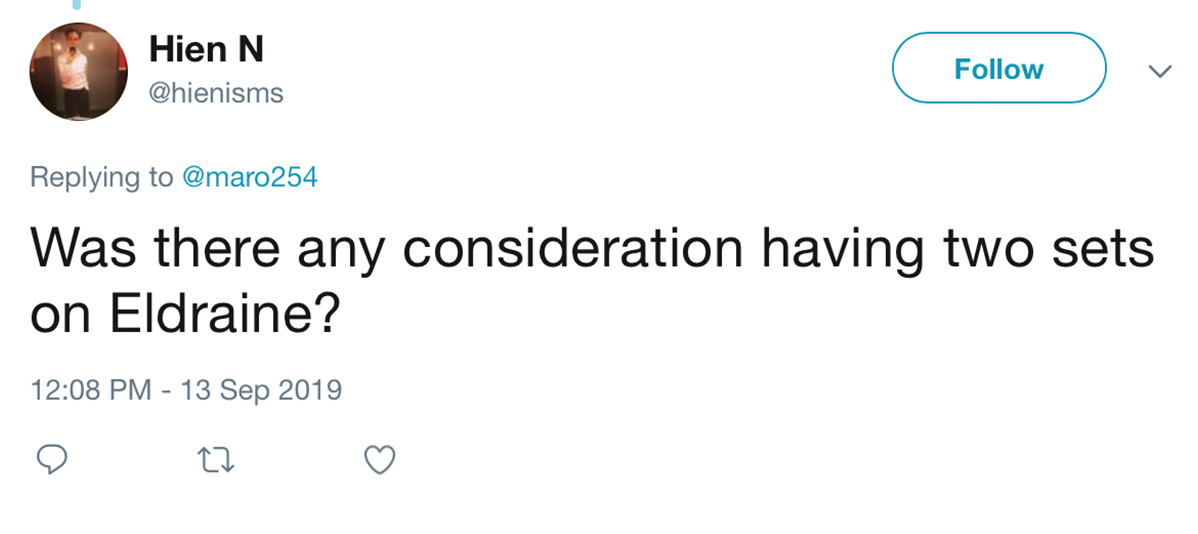
The very early plans originally had us considering staying on Eldraine for two sets, but we'd just done three sets in a row on the same plane and were kind of itching to get back to Theros, so we decided to just stay on Eldraine for one set. If players enjoy the plane of Eldraine (and the data backs it up), trust me, I'll push hard for us to return.
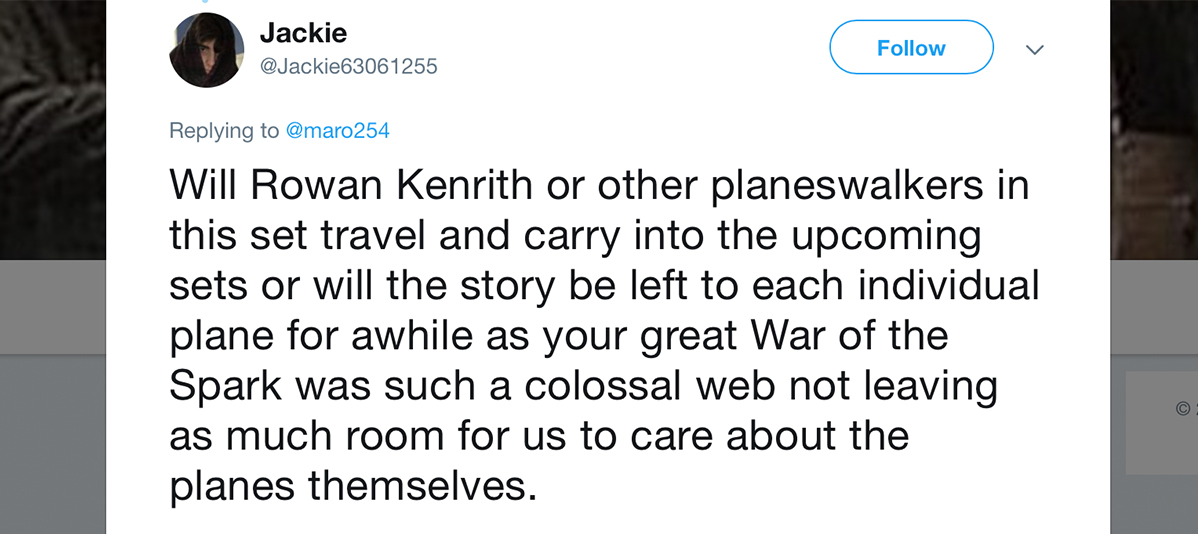
After a very connected three-year story, we're shifting gears a little and telling a few smaller stories. That said, there is a connected tissue that always runs through the Magic story. You will be seeing the Planeswalkers of Throne of Eldraine again, and some of the incidents of this story will have ramification on stories in the future.
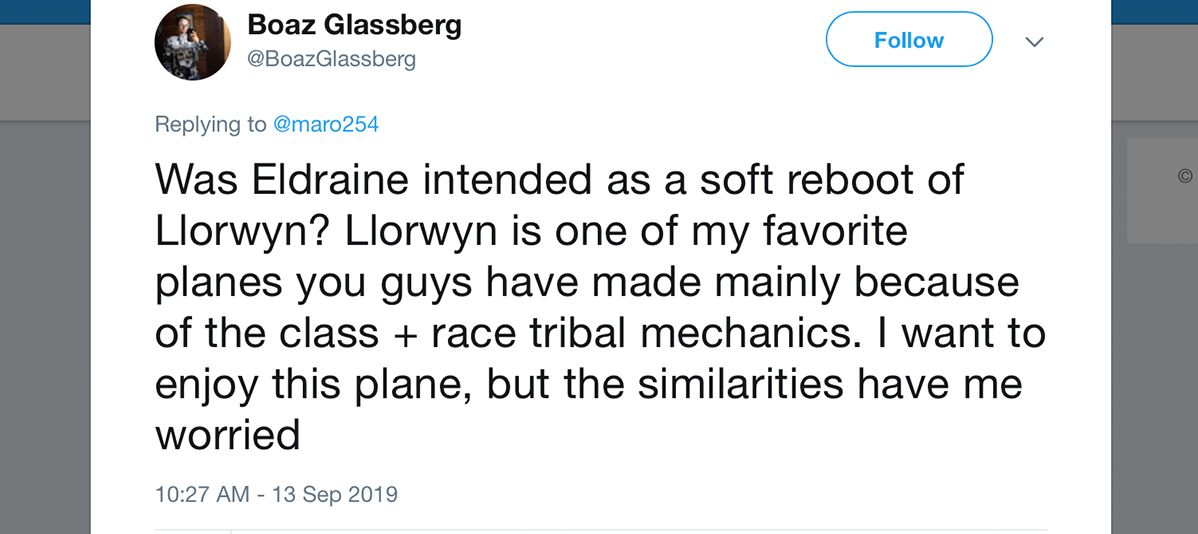
I firmly believe that Lorwyn/Shadowmoor and Eldraine are two very different Planes. The only reason I think people connect them is that Lorwyn, when it came out, was the closest thing Magic had ever done to a "fairy-tale" Plane. The combination of a few familiar elements (Faeries, Giants, Elves, etc.) with a lighter tone hinted at something Magic could do. Lorwyn was, in fact, the thing that made me realize I wanted to do a fairy-tale set, but a big part of that was because Lorwyn wasn't that. It hinted at something else while not actually being that thing. It wasn't a top-down set, it wasn't designing cards to match trope space, and it lacked two big things that a fairy-tale Plane needed to have: 1) Humans; there's just no hitting fairy-tale tropes without Humans playing a central role, and 2) no structured society; fairy tales needed to have kingdoms, castles, kings and queens, princes and princesses—the medieval underpinning is key to making fairy tales click together.
Lorwyn/Shadowmoor, in contrast, is a bottom-up Plane built around the contrast of its two states. It's a Plane that transforms back and forth between a world of lightness and a world of darkness. The uniqueness of it is that it lives in flux between these two states and any return would want to mechanically play in that space. On top of that, it has both tribal and hybrid elements that are core to its identity, both of which are mechanical in nature.
So no, in no way do I consider Eldraine a soft reboot of Lorwyn/Shadowmoor. Yes, there's a little overlap, but so too is there between Eldraine and Innistrad (I actually think that overlap is larger—and I have total faith we'll return again to Innistrad). The trickiness of Lorwyn/Shadowmoor returning has more to do with how the audience responded to that Plane when it initially came out, not because Eldraine steps on its toes.
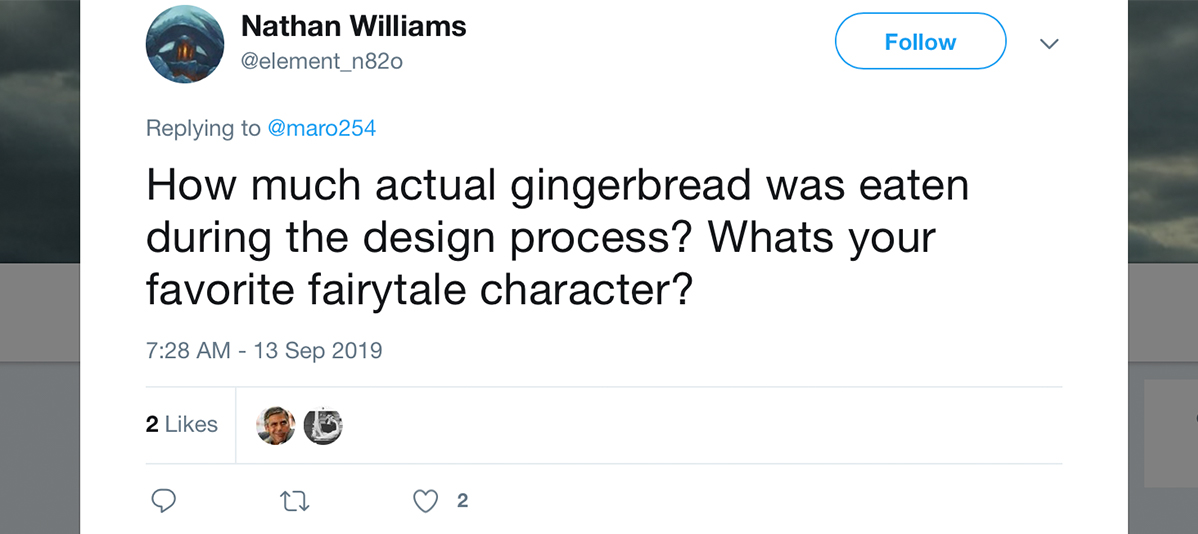
Interestingly, I think the Gingerbread Man was the character I was most rooting for making it to print, perhaps because it represented a willingness to let Throne of Eldraine be a little sillier. That said, I am not a fan of gingerbread cookies. When I went to shoot the Throne of Eldraine stream, Cynthia Sheppard (the set's art director and lead world designer) was eager to eat the gingerbread cookies we were using as props. I, though, was much more interested in eating one of the sugar cookies we made to show off the 2020 sets' expansion symbols. After shooting was wrapped, I ate the Theros Beyond Death cookie, and it was delicious.
And That's a Wrap
That's all the time I have today to answer questions, but I'll return next week to answer a bunch more. As always, I'm eager to hear your feedback on any of my answers or about Throne of Eldraine. You can email me or contact me through any of my social media accounts (Twitter, Tumble, and Instagram).
Join me next week for more answers.
Until then, may Throne of Eldraine be as sweet for you as that Theros Beyond Death cookie was for me.
#679: Changing the Color Pie
#679: Changing the Color Pie
In this podcast, I discuss when, how, and why we make changes to the color pie.
#680: Diversity in Game Design
#680: Diversity in Game Design
32:58
In August, I wrote an article about why diversity matters in game design. This is my podcast version of that topic.
- Episode 678 Small Talk with Sarah
- Episode 677 Other People's Lessons – Lessons Learned
- Episode 676 Lessons Learned – War of the Spark

